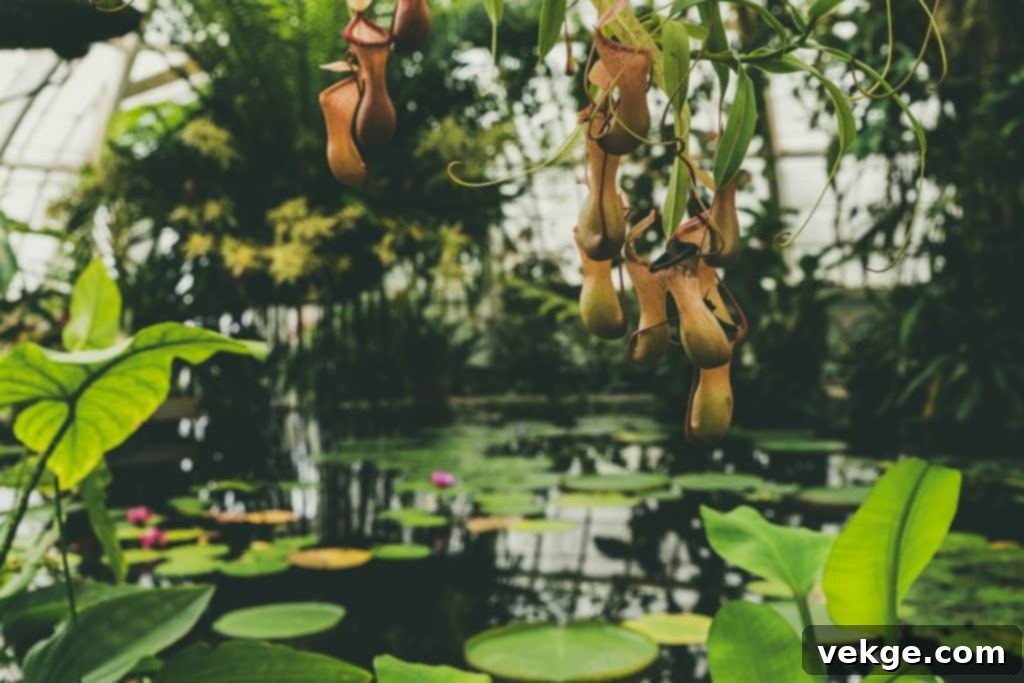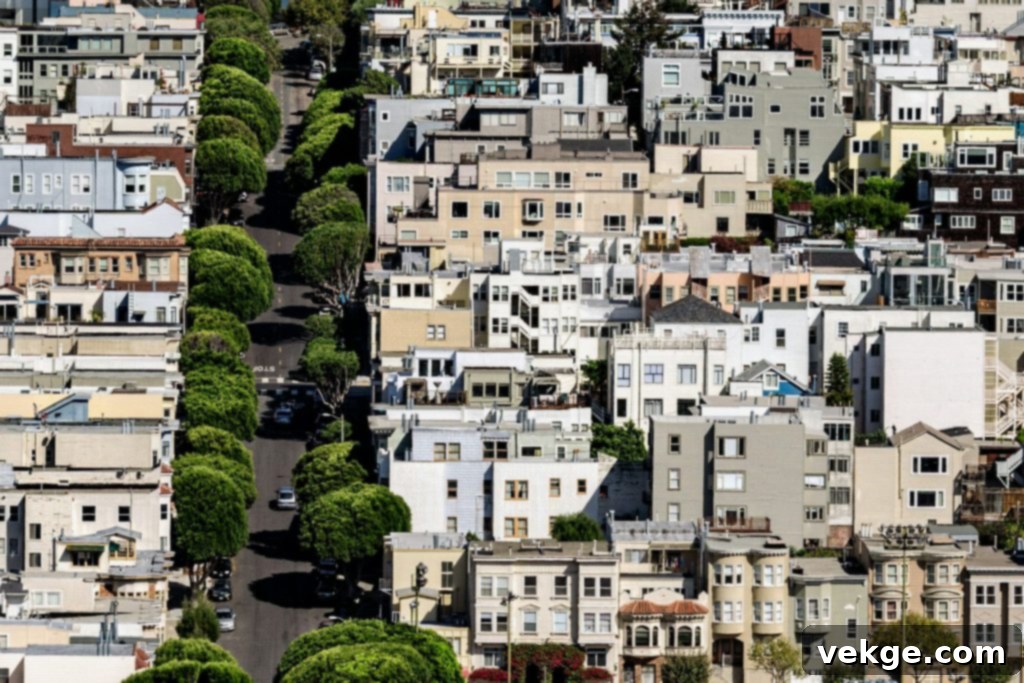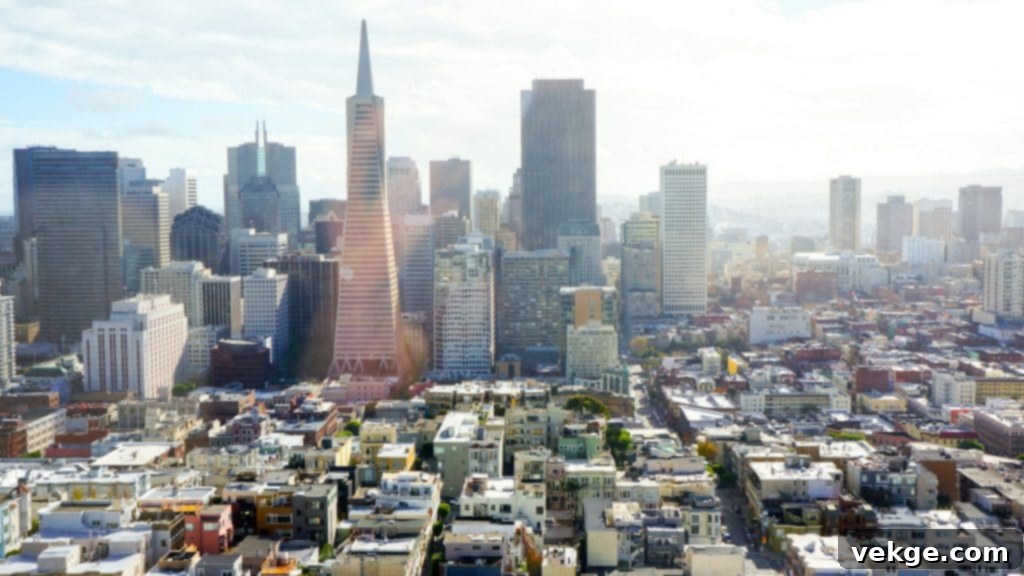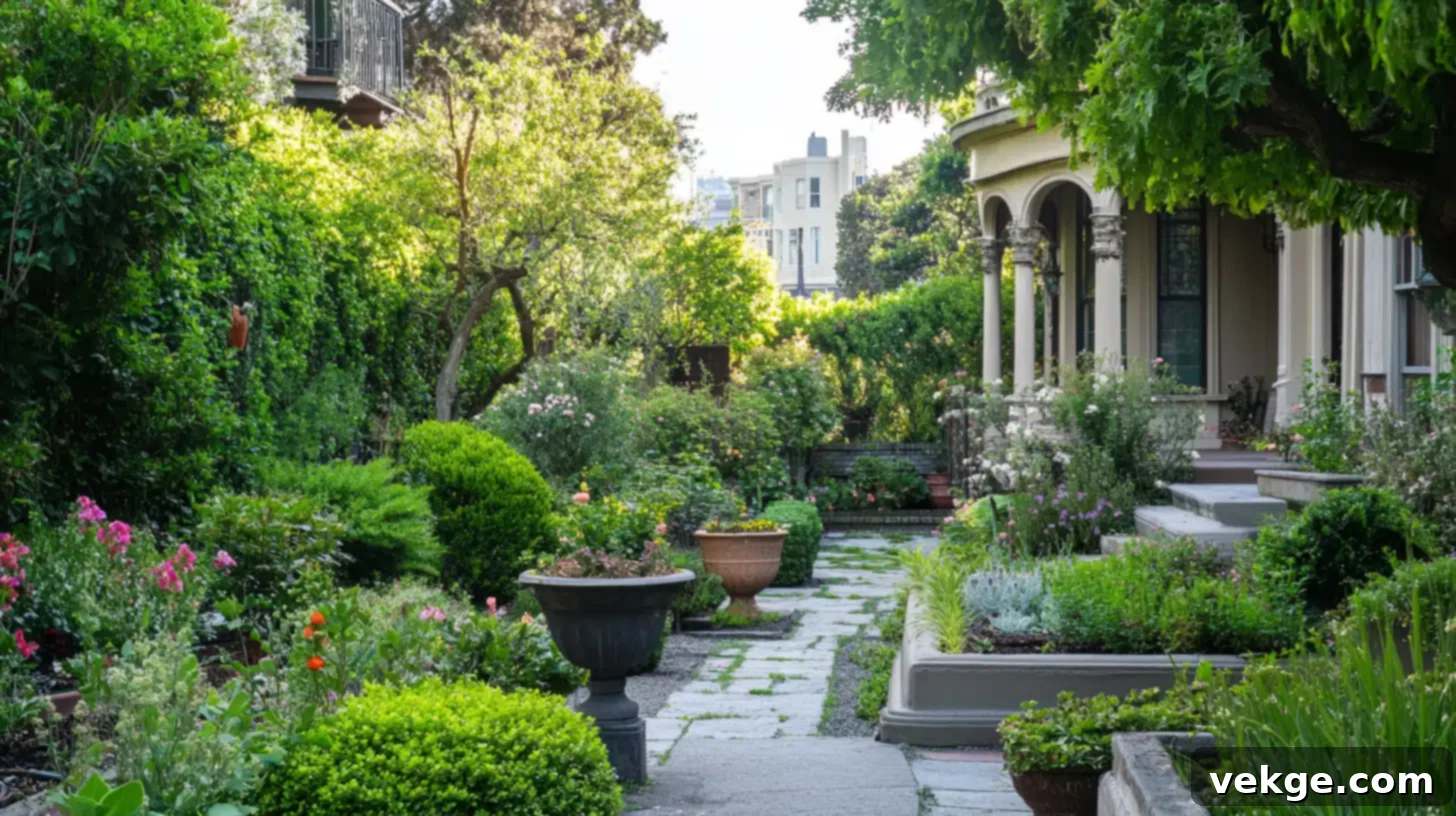Cultivating Urban Oases: A Comprehensive Guide to San Francisco’s Best Gardens, Parks, and Green Spaces
San Francisco, a city renowned for its iconic landmarks, vibrant culture, and breathtaking vistas, also harbors a secret paradise for gardening enthusiasts. Its unique geographical position, nestled between the Pacific Ocean and the San Francisco Bay, creates an array of distinct microclimates. These varying conditions, from foggy coastal areas to sun-drenched inland neighborhoods, provide an incredibly diverse palette of opportunities for cultivating greenery. Whether you’re a seasoned horticulturist or a budding urban farmer, San Francisco offers a treasure trove of inspiration, from sprawling public parks to ingenious rooftop gardens and thriving community plots.
This comprehensive guide delves into the best places to explore San Francisco’s verdant landscape, offering insights into local flora, sustainable practices, and innovative gardening techniques. Discover how residents and city planners alike transform limited spaces into lush oases, fostering biodiversity and enhancing urban living. As you embark on your exploration of San Francisco’s beautiful gardens and parks, remember to make your experience as enjoyable and unencumbered as possible. Consider utilizing a convenient luggage storage service in San Francisco. With Bounce, you can securely store your bags and fully immerse yourself in the city’s natural beauty without the hassle of carrying extra baggage, allowing you to freely wander and discover every hidden green gem.
1. Golden Gate Park: A Horticultural Wonderland

Golden Gate Park stands as a colossal testament to urban green space planning, stretching over 1,000 acres and ranking among the largest urban parks in the United States. More than just a park, it’s a living laboratory and a breathtaking showcase of horticultural diversity. For gardeners, it offers endless inspiration, demonstrating how a wide array of plants can flourish within San Francisco’s unique climate zones.
Among its most celebrated attractions are the Japanese Tea Garden, North America’s oldest public Japanese garden, where meticulously sculpted landscapes, serene koi ponds, and traditional pagodas create a tranquil retreat. Here, visitors can observe the art of bonsai, delicate azaleas, and various conifers thriving in harmony. Another crown jewel is the Conservatory of Flowers, a magnificent Victorian greenhouse housing a spectacular collection of rare and exotic plants, including lowland tropics, highland tropics, and aquatic plants. This living museum provides invaluable lessons on humidity control, plant propagation, and the cultivation of species far removed from San Francisco’s native flora.
Beyond these iconic spots, the park is home to numerous other themed gardens, such as the Shakespeare Garden, adorned with plants mentioned in the bard’s plays, and the San Francisco Botanical Garden, which showcases over 8,000 different kinds of plants from around the world, organized by geographical region. Exploring these areas offers a unique opportunity to identify plants that are well-suited to San Francisco’s local climate – from robust ferns flourishing in dappled light to vibrant flowering shrubs that add splashes of color. Gardeners can gain practical insights into plant selection, soil management, and even water conservation by observing the diverse ecosystems within Golden Gate Park. It’s an indispensable resource for understanding the possibilities of gardening in a temperate, often foggy, urban environment.
2. Dolores Park: Community Vibe Meets Urban Greenery
Dolores Park, nestled in the heart of the vibrant Mission District, is much more than just a popular gathering spot; it’s a testament to urban community spirit intertwined with creative gardening. While famed for its lively atmosphere, sunbathers, and stunning panoramic views of the city skyline, the park also subtly showcases practical gardening solutions ideal for San Francisco’s dense urban fabric.
The park’s terraced layout isn’t just aesthetically pleasing; it cleverly maximizes usable space, demonstrating how sloped areas can be transformed into functional and beautiful green zones. For the urban gardener, Dolores Park is a fantastic place to observe the principles of container gardening in action. Residents and local businesses around the park creatively utilize pots, planters, and raised beds to cultivate a diverse array of herbs, vibrant flowers, and even small vegetables. This ingenuity highlights how limited balcony space, patios, or small front yards can be transformed into productive and beautiful micro-gardens.
Observing the plant choices in and around Dolores Park can provide inspiration for drought-tolerant species that thrive in sunny spots, as well as plants that can withstand heavy foot traffic. The community’s informal approach to greening their surroundings, often spilling out onto sidewalks and public stairways, reflects a broader San Francisco ethos of making every patch of earth count. It’s a vivid example of how gardening can contribute to the aesthetic appeal and livability of a bustling urban neighborhood, fostering a sense of pride and connection among residents.
3. Twin Peaks: Discovering Native California Flora
Perched high above the city, Twin Peaks offers not only some of the most spectacular 360-degree views of San Francisco but also a profound lesson in native plant gardening. For enthusiasts eager to understand California’s indigenous flora, this iconic landmark is an essential destination. The natural environment here serves as a living exhibition of resilience and adaptation, showcasing a rich variety of native plants that have evolved to thrive in the region’s specific climate conditions, including its characteristic fog, wind, and dry summers.
Exploring the trails and open spaces of Twin Peaks allows gardeners to identify and appreciate California native plants such as California poppies, lupines, coyote bush, and various types of sage. These species are naturally low-maintenance, requiring significantly less water once established compared to non-native alternatives, making them incredibly valuable for drought-resistant landscaping – a critical consideration in California. By observing these plants in their natural habitat, gardeners can learn about their growth patterns, soil preferences, and how they contribute to local biodiversity by supporting native pollinators and wildlife.
The experience at Twin Peaks goes beyond mere observation; it’s an immersive dive into ecological gardening. It inspires the adoption of xeriscaping principles and the creation of gardens that are both beautiful and environmentally responsible. Understanding which native plants thrive in this exposed, often windy environment provides invaluable insights for anyone looking to cultivate a garden that harmonizes with San Francisco’s natural ecosystem, all while offering unparalleled photographic opportunities against the backdrop of the city skyline.

4. Rooftop Gardens: Elevated Urban Farming Solutions
In a city as densely populated and geographically constrained as San Francisco, where ground-level green space is a luxury, rooftop gardening has emerged as an ingenious and increasingly popular solution. This innovative approach to urban farming transforms previously underutilized spaces – the rooftops of residential buildings, commercial establishments, and even public institutions – into thriving verdant havens. Rooftop gardens are far more than just aesthetically pleasing; they offer a myriad of environmental, economic, and social benefits.
From an ecological standpoint, these elevated gardens contribute significantly to urban sustainability. They act as natural insulators, helping to regulate building temperatures by reducing heat absorption in summer and minimizing heat loss in winter, thereby lowering energy consumption and utility bills. Furthermore, rooftop plants play a vital role in improving urban air quality by filtering pollutants and producing oxygen. They also help manage stormwater runoff, absorbing rainwater and reducing the strain on municipal drainage systems, which is particularly beneficial in a hilly city like San Francisco.
For the urban gardener, rooftop spaces present unique challenges and opportunities. Considerations such as structural integrity, sun exposure, wind patterns, and irrigation systems are paramount. However, the rewards are immense: fresh produce, beautiful floral displays, and a peaceful escape from the urban bustle. Ideal plants for San Francisco rooftop gardens include drought-tolerant succulents that can withstand direct sun and wind, robust herbs like rosemary, thyme, and basil, and even productive vegetables such as tomatoes, peppers, and various leafy greens that thrive in containers. Raised beds and smart irrigation systems are often employed to maximize yield and minimize maintenance.
Many buildings, both residential and commercial, are embracing this trend, fostering a sense of community among residents who share these green spaces. They exemplify how creative thinking can transform the urban landscape, one rooftop at a time, making San Francisco a greener, more sustainable place to live.
5. The Presidio: A Model of Sustainable Landscape Restoration
The Presidio of San Francisco, a former military post transformed into a national park site, is a magnificent example of how historical preservation and ecological restoration can harmoniously coexist. Spanning 1,500 acres, it’s a dynamic landscape where natural beauty, rich history, and cutting-edge environmental practices converge. For the environmentally conscious gardener, The Presidio is an invaluable living classroom, offering profound insights into sustainable land management and native habitat restoration.
The park’s extensive restoration projects are centered around re-establishing native plant communities that once flourished here, aiming to restore the ecological balance and promote biodiversity. Visitors can observe how meticulously planned native plantings are used to stabilize dunes, prevent erosion, and create vital habitats for a diverse array of local wildlife, including migratory birds, insects, and small mammals. Areas like the Tennessee Hollow Watershed demonstrate a successful multi-year effort to bring a stream back to life, surrounded by native wetland and riparian vegetation.
The Presidio’s gardening philosophy emphasizes eco-friendly practices, including water-wise landscaping, organic pest management, and the careful selection of plants that thrive without excessive intervention. The various gardens and natural areas within the park, such as the Presidio Promenade and the Inspiration Point overlook, showcase a range of California native trees, shrubs, and wildflowers. Learning from these efforts can inspire home gardeners to adopt similar principles in their own spaces, creating gardens that are not only beautiful but also resilient, require less water, and support local ecosystems. It’s a powerful demonstration of how thoughtful gardening can contribute to a healthier planet, making it an essential visit for anyone passionate about conservation and ecological design.
6. Community Gardens: Cultivating Connection and Crops
Beyond the grand parks and private green spaces, San Francisco boasts a vibrant network of community gardens that serve as crucial hubs for urban agriculture, social connection, and environmental education. These shared plots, scattered across various neighborhoods, transform vacant lots and underutilized public lands into thriving havens of edible plants, fragrant flowers, and native flora. They embody the spirit of collaborative gardening, where residents come together to cultivate not just plants, but also strong community bonds.
Organizations like the Garden for the Environment (GFE) stand out as pioneers in urban environmental education. GFE offers workshops, demonstrations, and resources on sustainable gardening practices, composting, and organic food production, empowering residents to grow their own food even in compact urban settings. Similarly, the San Francisco Community Garden Network facilitates access to numerous garden plots, fostering a sense of ownership and shared responsibility among city dwellers.
These community gardens are diverse in their character and focus. Some are dedicated to growing organic vegetables and fruits, providing fresh, locally sourced produce for participants. Others prioritize native plant restoration, creating pollinator-friendly habitats. All, however, share a common goal: to provide accessible green spaces where urban residents can connect with nature, learn practical gardening skills, and engage in meaningful social interaction. Participating in a community garden allows individuals to exchange valuable tips on growing local varieties, troubleshoot gardening challenges, and celebrate successful harvests together. It’s an empowering experience that highlights the transformative power of shared green initiatives in building more resilient and connected urban communities.
7. Mission District: A Tapestry of Urban Gardening Creativity
The Mission District, celebrated for its colorful murals, historic architecture, and dynamic cultural scene, also showcases an impressive grassroots movement in urban gardening. This vibrant neighborhood exemplifies how individual creativity and community spirit can transform even the smallest, most unassuming urban spaces into flourishing gardens. Walking through the Mission’s streets and alleys, one encounters a fascinating tapestry of green initiatives, often tucked away in unexpected corners.
Residents in the Mission District are masters of maximizing limited space. Sidewalk planters, brightly painted window boxes, and creatively repurposed containers adorn countless homes and businesses. These micro-gardens frequently feature a delightful mix of edible plants – from chili peppers and tomatoes thriving in sunny spots to aromatic herbs like cilantro and oregano – alongside a colorful array of ornamental flowers that add beauty and attract pollinators. This blend of utility and aesthetics is a hallmark of Mission District gardening, reflecting the neighborhood’s artistic and resourceful character.
Beyond individual efforts, the Mission is home to several smaller community gardens and urban farms that provide a shared space for growing food and fostering social connections. These initiatives not only contribute to the local food system by providing fresh produce but also serve as important educational resources for sustainable living. The creativity evident in the Mission District’s urban gardens offers invaluable inspiration for anyone looking to start a garden in a compact space, proving that with a little ingenuity, any corner of the city can become a vibrant green sanctuary.
8. Lands End: Nature’s Resilient Coastal Garden
For a departure from cultivated gardens and a deeper appreciation of nature’s resilience, Lands End provides a truly unique “gardening” experience. This rugged, windswept stretch of coastline at the northwestern edge of San Francisco isn’t a manicured park but a wild, untamed landscape defined by dramatic cliffs, crashing waves, and the iconic ruins of Sutro Baths. While not a traditional garden, Lands End is an extraordinary natural showcase of native coastal plants that have adapted to harsh environmental conditions.
Walking the scenic coastal trails, visitors are immersed in a landscape dominated by plants specifically evolved to withstand salt spray, relentless winds, and sandy, nutrient-poor soils. Here, you’ll encounter hardy species like coastal sagebrush, various types of wild buckwheat, California coffeeberry, and beach strawberry. Observing these plants in their natural, often challenging, habitat offers profound lessons in plant selection for challenging environments. Home gardeners, particularly those living in coastal areas or dealing with difficult growing conditions, can draw valuable inspiration from the resilience and natural beauty of these species.
Lands End teaches us about the importance of choosing the right plant for the right place and understanding the ecological benefits of native flora. These plants require minimal intervention, thrive on natural rainfall, and provide essential food and shelter for local wildlife. It’s a powerful reminder that gardening isn’t always about taming nature, but sometimes about understanding, appreciating, and mimicking its inherent wisdom. The breathtaking views of the Pacific Ocean and the Golden Gate Bridge serve as a stunning backdrop to this rugged, living lesson in ecological adaptation and natural beauty.

Cultivating Green Thumbs: Essential Tips for Small Space Gardening in San Francisco
San Francisco’s urban environment often presents the challenge of limited space, but this doesn’t mean you can’t create a thriving garden. With a bit of creativity and smart planning, even the smallest balcony, patio, or window ledge can become a productive and beautiful green sanctuary. Here are expanded tips tailored for urban gardeners in the Bay Area:
- Maximize Vertical Space: When horizontal space is at a premium, look upwards! Install shelves, cascading vertical planters, or even repurpose old pallets to create stunning living walls. This method is perfect for growing a variety of herbs like basil, mint, and chives, leafy greens such as lettuce and spinach, and trailing flowers like petunias or nasturtiums. Vertical gardening not only saves space but also adds a unique aesthetic to your urban oasis, making it a focal point.
- Embrace Container Gardening: Pots, planters, and raised beds are your best friends in small spaces. They offer unparalleled flexibility, allowing you to move plants to optimize sun exposure, protect them from wind, or even bring them indoors during unseasonably cold weather. Choose containers of various sizes and materials to add visual interest. Ensure they have good drainage. Almost anything can be grown in a container, from a miniature rose bush to a productive tomato plant or a vibrant collection of annuals.
- Prioritize Drought-Resistant and Native Plants: Given California’s climate and recurring drought concerns, selecting plants that thrive on less water is a wise and sustainable choice. San Francisco’s Mediterranean climate is ideal for many drought-tolerant species. Consider succulents, sedums, lavender, rosemary, California poppies, and many other native California plants. These require less frequent watering once established, conserving precious resources and making your gardening efforts more eco-friendly and lower maintenance.
- Implement Companion Planting Strategies: This age-old gardening technique involves pairing plants that benefit each other, whether by deterring pests, attracting beneficial insects, improving soil health, or optimizing growth. For instance, planting marigolds near vegetables can deter nematodes and other harmful insects. Basil planted with tomatoes is said to improve tomato flavor and ward off tomato hornworms. Learning about beneficial plant relationships can significantly boost your garden’s health and productivity, even in a small area.
- Optimize Sun Exposure: Observe how sunlight moves across your gardening space throughout the day. Most vegetables and flowering plants require at least 6 hours of direct sun. If your spot is shadier, focus on shade-loving plants like ferns, impatiens, hostas, or specific herbs like mint and parsley. Understanding your light conditions is crucial for plant success.
- Consider Edible Landscaping: Why grow only ornamentals when you can also grow food? Integrate edible plants into your design. Berry bushes, dwarf fruit trees, leafy greens, and herbs can be just as beautiful as flowers, and they provide delicious, fresh produce. This approach maximizes the utility of your small space.
- Smart Watering Techniques: In containers, plants can dry out quickly. Use self-watering planters, drip irrigation systems, or water-retaining crystals in your soil mix. Water deeply and less frequently rather than shallowly and often, encouraging stronger root growth. Mulch your containers to retain moisture and suppress weeds.
- Regular Feeding and Pruning: Container plants rely entirely on you for nutrients. Use a good quality potting mix and supplement with organic fertilizers as needed. Regular pruning keeps plants healthy, encourages bushier growth, and can even stimulate more blooms or fruit production.
Embrace San Francisco’s Green Revolution: Cultivating Beauty and Community
San Francisco truly stands as a unique urban landscape, offering an extraordinary blend of natural beauty and human ingenuity when it comes to gardening. From the vast, meticulously maintained acres of Golden Gate Park to the intimate, creatively utilized spaces of a Mission District balcony, the city provides an unparalleled canvas for gardening enthusiasts of all levels. Whether you are a seasoned horticulturist seeking new challenges or a beginner simply looking to grow a few herbs, San Francisco’s diverse microclimates and innovative green initiatives offer endless possibilities.
Exploring the city’s iconic parks, engaging with vibrant community gardens, marveling at the resilience of native plants at Twin Peaks and Lands End, and discovering the urban farming solutions of rooftop gardens, you’ll find inspiration at every turn. These green spaces not only provide stunning visual backdrops and opportunities for outdoor recreation but also serve as vital educational resources for sustainable living, biodiversity, and ecological restoration. They demonstrate how urban environments can be transformed into thriving ecosystems, contributing to improved air quality, reduced stormwater runoff, and enhanced mental well-being for residents.
Ultimately, San Francisco’s gardening scene is about more than just cultivating plants; it’s about nurturing a sense of community, fostering connection with nature, and promoting a sustainable urban lifestyle. It’s about taking pride in greening your corner of the world, no matter how small. So, grab your gardening gloves, explore these verdant treasures, and discover the joy of growing in one of the world’s most beautiful cities. And remember, for a truly unburdened exploration, secure your belongings with a reliable luggage storage service like Bounce, allowing you to fully embrace every blooming opportunity San Francisco has to offer.
